
Living in Ladakh might seem like living in a remote part of the planet, especially when people feel cut-off from rest of the world for up to seven months in a year. With roads blocked due to heavy snow, landlocks exist in Ladakh till May or June every year, showing how remote the place is.
While problems vary from place to place and terrain to terrain, everyone is looking for simple and local solutions here to indigenise and solve them. Sonam Wangchuk from Ladakh believes, it would be interesting to know how the same science is being applied differently in Ladakh. He further explains how new digital technologies can be used to connect mountains, marking a huge milestone in network and connectivity.
Ladakh, located on the northernmost part of India, across the Himalayas, is quite a high and dry place with temperatures ranging from -35°C to +35°C from winter to summer. Situated on the Tibetan plateau—the rooftop of the world—this place is as close as it can get to outer space while still being on planet Earth. In terms of climate, Ladakh is considered a rarity, since when water freezes, problems like freezing, blockages, and bursting open of pipes happen. Yet, Ladakh is a thriving hub of innovation and problem solving.
Solar-powered houses
The launch of Students’ Educational and Cultural Movement of Ladakh (SECMOL) has enabled children from the mountain range to have hands-on experience and learn things the practical way. Built entirely with mud from under the feet and powered by the sun over the head, this is one of the first schools that has had a zero energy off-grid campus.
This story is from the {{IssueName}} edition of {{MagazineName}}.
Start your 7-day Magzter GOLD free trial to access thousands of curated premium stories, and 9,000+ magazines and newspapers.
Already a subscriber ? Sign In
This story is from the {{IssueName}} edition of {{MagazineName}}.
Start your 7-day Magzter GOLD free trial to access thousands of curated premium stories, and 9,000+ magazines and newspapers.
Already a subscriber? Sign In

STK435 IC-Based STEREO AMPLIFIER
This stereo AF amplifier uses the STK435 IC, a highly popular choice due to its simplicity.

A SEWER DRAIN SHIELD For Smart Cities
Drainage systems are vital for storm water management but often transport pollutants, especially plastics, to rivers and oceans, harming ecosystems.
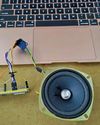
ESP32 SPEECH FUNCTION: Text To Speech
Speech capability in technology primarily has two dimensions: text to speech (TTS) and speech to text (STT). This device focuses on TTS.
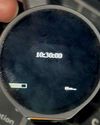
World's Smallest Programable INDUSPHONE DESIGN
This is the second part of designing the world’s smallest phone, where the UI is integrated with the basic functions of the phone.
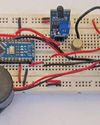
FLAME-SENSING FIRE ALARM Using An Arduino Nano
Fire safety alarms are crucial in both residential and industrial environments.
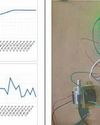
loT-Based Distribution Transformer CONDITION MONITORING SYSTEM
The proposed IoT-based distribution transformer condition monitoring system enables real-time monitoring of distribution transformers, identifying such deviations as overload conditions and overheating.

Wi-Fi 6 AND Wi-Fi 7 Powering The Next Wave of Smart Connectivity
Wi-Fi 6 leads with faster data rates and reduced latency while upcoming Wi-Fi 7's backward compatibility will facilitate gradual upgrades from Wi-Fi 6, easing transitions. However, advanced features like multi-link operation (MLO) and ultra-low latency may command a premium, making Wi-Fi 7 suited for high-end applications.

CHARGE FORWARD: High-Voltage Batteries And MSMEs Can Fuel INDIA'S EV REVOLUTION
A nuanced explanation of low- and high-voltage EV batteries by Dr Gokhale, Vice President for Battery Technology at JSW Energy, illuminates their advancements and influence. The essential role of MSMEs and academia in developing a strong EV ecosystem emerges, marking their significance for India's push towards self-reliance in this innovative field.

"MILES TO GO Before I Sleep"
A teacher illuminates the path to success through the light of knowledge, yet some teachers extend that light to society through their contributions and research. Known as the architect of the modern M3 electronic voting machine (EVM) and the voter verifiable paper audit trail (VVPAT) that transformed India's democratic process, Prof. (Dr) Rajat Moona's journey began in the modest town of Bareilly. Here is his story, as recounted to and written by EFY's Yashasvini Razdan.
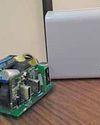
STARTUPS & INNOVATORS
1 One Charger To Charge All Your Devices | 2 Harnessing AI Technology For Efficient Pest Management | 3 Wireless Light-Based Communication With Velmenni's Technology